
Asturias is one of the most beautiful regions in Spain. Anyone who has visited the Asturian mountains is charmed by the strength of its landscapes. Captivated by its beautiful villages, the warmth of its people and the landscapes. Asturias has two mountain ranges running parallel to the coast, one closer to the coast and the other inland. If you want to make a great plan, see green, rocky landscapes and its characteristics, this route around 9 mountain villages in Asturias is perfect for that.

In Espinaréu you can see the classic Asturian horreos. | Shutterstock
If there is a village that seems to be taken out of a tale, that is Espinaréu. A beautiful spot located in the Sierra Bedular, in the eastern part of Asturias. As soon as you enter its green streets you can see rustic houses made of rock, wood and tiles, built in the old style. It is a reflection of the most representative Asturian tradition, as it still preserves several craftsmen in its territory, including hórreos and paneras, now practically extinct.
It is an idyllic and romantic landscape. Many travellers in love with rural tourism come to this small village of just 160 inhabitants. A village well worth visiting and enjoying in all its splendor.
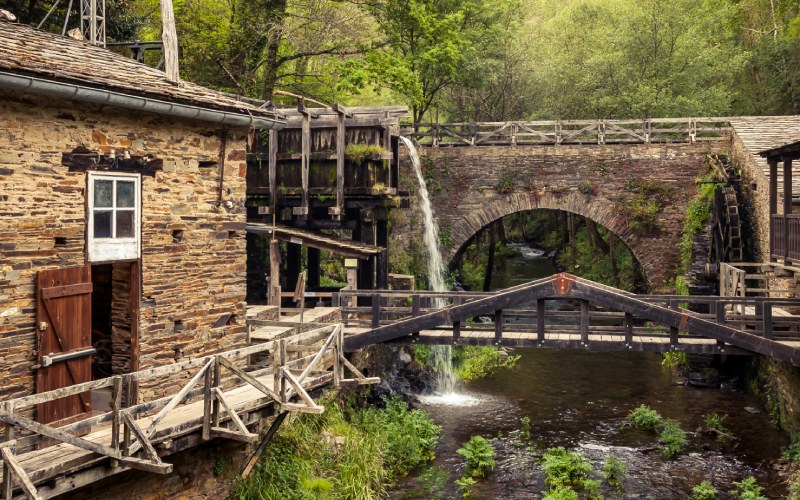
Breathtaking views of Taramundi. | Shutterstock
Now it’s time to recommend a spectacular village that is a must-stop in this route around 9 mountain villages in Asturias. Almost next to Lugo is Taramundi, an Asturian municipality that even has its own language, Eonaviego. It is a green, mountain region, where you can enjoy living fields, discover old trades, admire some granaries that have survived the test of time, or mills.
There are wonderful hikes to do.The water route, Los Ferreiros or Sol y Sombra. Tourist attractions that attract thousands and thousands of hikers every year. If you are very tired after walking, it is time to eat local cheese and taste cider. It is impossible to resist such a plan.

The spectacular Roman bridge of Cangas de Onís. | Shutterstock
Who has never seen the Roman bridge from the Middle Ages in Cangas de Onís? It is one of the most beautiful things you can see in Asturias, pure legend. But it’s not only that the whole town and its surroundings are a delight for travellers. The Basílica of Santa María la Real and the Hermitage of Santa Cruz are mandatory stops for anyone with interest in the history of this region. Is there anyone who doesn’t know Don Pelayo?
This municipality, whose boundaries are now home to just over 6,000 people, has that smell of the Roman era. And yes, it is the perfect place to enjoy a good classic Asturian fabada with its chorizo and black pudding. Or the traditional and restorative Asturian stew. Asturian gastronomy is one of its strong points. You can also enjoy its traditional festivities. You have to go at least once in your life.
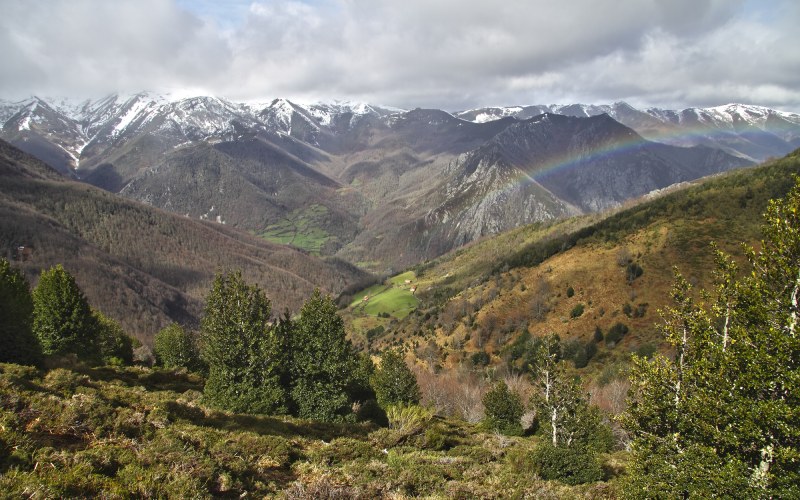
The views of the Asturian valleys are breathtaking. | Shutterstock
When you enter the municipality of Somiedo, you can visit Villar de Vildas. A small and beautiful village of just over 100 inhabitants. It is a small village that has turned to rural tourism. There are rural houses, good restaurants and hotels to stay in. It is located to the right of a valley, below the mountains. The views are breathtaking. It is a place to do active tourism, put on your hiking shoes, get lost and enjoy its fauna and flora. For those who like National Geographic documentaries, Villar de Vildas is a good experience.
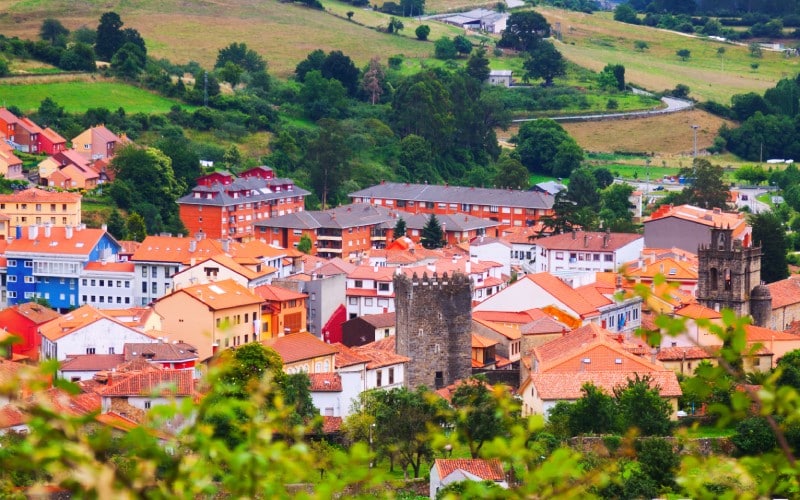
View from the outskirts of the pretty village of Salas. | Shutterstock
Located in the central-western part of the region, Salas is a village more populated than its predecessors, medieval, which stands out for its patrimonial power. It is an stop visit for art historians, scholars and travellers who like to learn about past generations.
Salas is a classic stage of the primitive Pilgrim’s Way to Santiago that not only impresses with its well-preserved tourist attractions, such as fortresses, castles and churches. It is also enhanced by some dreamy landscapes in the background. You should not leave the village without having a good meal or tasting the exquisite “Carajitos del Profesor” with a good hot coffee.
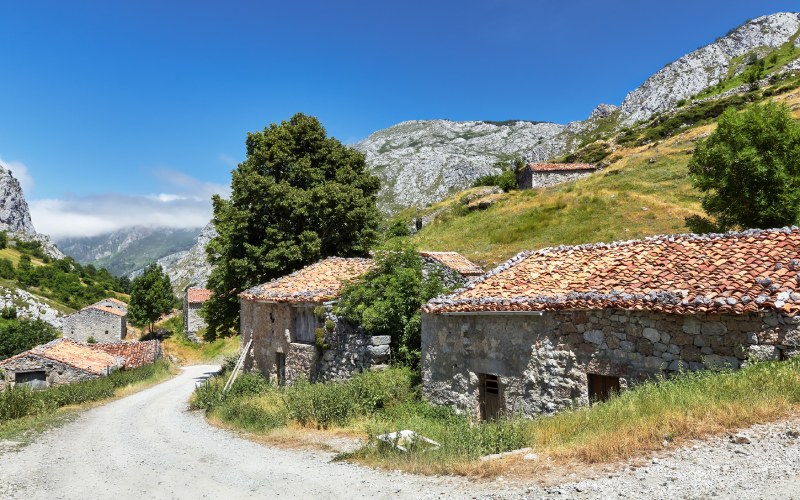
As can be seen, Sotres is a natural paradise. | Shutterstock
An essential and unavoidable stop for nature and high mountain lovers. It is the highest village in Asturias, so it should also be visited with warm clothes. The views are breathtaking from any part of the village, located in the heart of the Peñas. From here there are countless routes, and it is a meeting and arrival point for backpackers.
The village has small houses, almost all of them made of stone. Its population lives from the hotel trade and livestock farming. It looks like a small village from a film, where it is not unusual to come across cows, sheep and mountain dogs. A photo of this village is a postcard to remember.
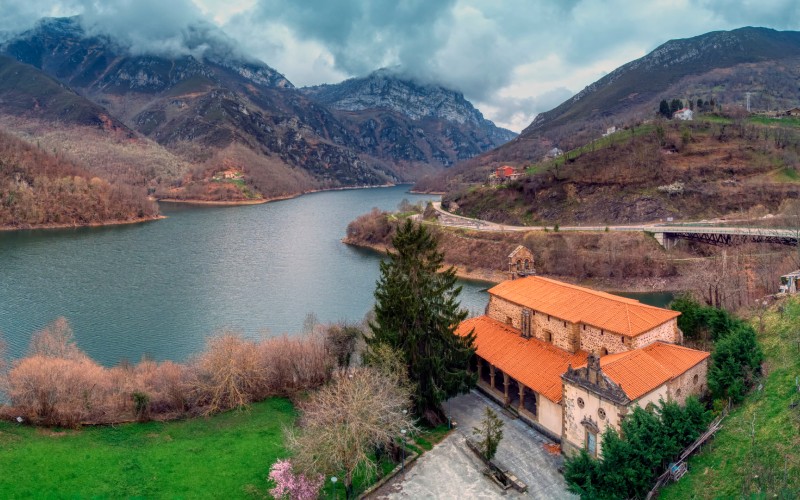
The majestic views from Santa María la Real will captivate anyone. | Shutterstock
In the municipality of Caso is Tanes, a remote and beautiful village that bears the same name as the reservoir to which it is attached. It is worth seeing: mountains and water in a beautiful spot, perfect to escape and take refuge in the serenity and happiness of its people. Everyone who visits Tanes comes to see the collegiate church of Santa María la Real, a beautiful temple that blends in with the natural landscape. But it doesn’t really matter where you look: everything is beautiful around this little jewel of Asturias, a must-see.
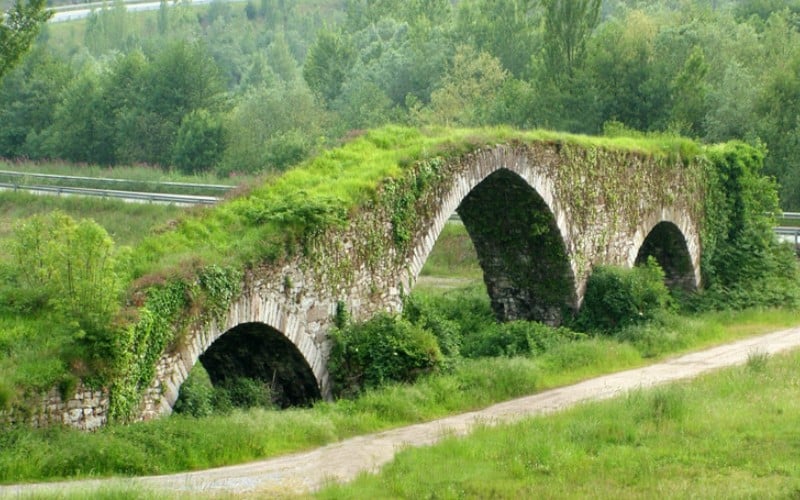
Medieval bridge of Olloniego. | Urbano Suárez, Wikimedia
If there is a village that seems to take visitors back in time to the Middle Ages, it is Olloniego. The village and its surroundings are located very close to Oviedo and within its boundaries we can see several monuments, each one more impressive than the last. The Historical Complex (formed by the Muñiz Tower, the new chapel, the palace of Los Quirós and the old church of San Pelayo) is a must-see in this 9 mountain villages in Asturias, and is an Asset of Cultural Interest.
But it is not just this group of buildings; the Llocos Fountain, the Pozo of San José and the remains of the Castle of Tudela are also impressive. If you are interested in hiking, you can see these marvellous monuments on a route that links all these points. The best time to visit it is perhaps June, with the San Antonio and San Pelayo festivities. Gastronomy, sport, culture and tradition come together in a final fireworks display, including a float and street party.
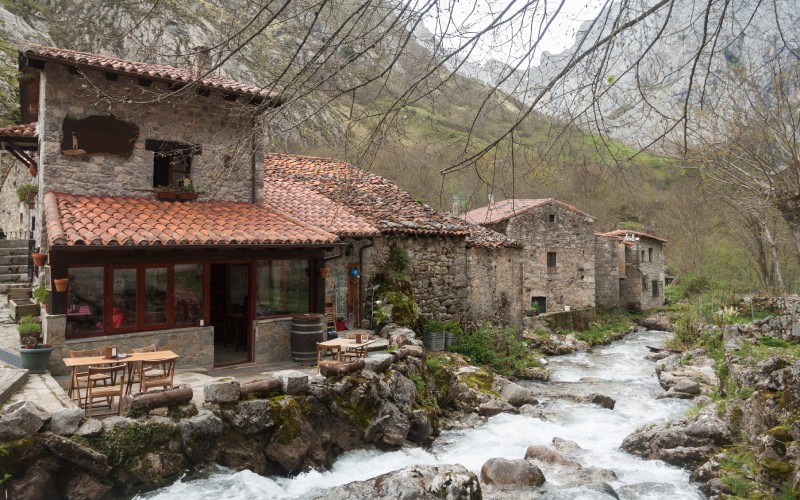
This is how impressive Bulnes looks. | Shutterstock
Pay attention, because Bulnes, this Asturian mini-village located in the heart of the Picos de Europa, can only be reached by hiking or by funicular railway. It is a meeting place for hikers and nature lovers. The charm of the wild flora and fauna is combined with fairytale stone houses.
In Bulnes there are bars where you can rest from those long and complicated mountain routes, have a good cider, taste Cabrales cheese and recharge your batteries. Everything that can be said about this small village falls short of the feelings awakened by walking along its paths. It is especially recommended for adventurous people, but not so much for large families who find the mountains too demanding. A natural jewel like few others in Spain.